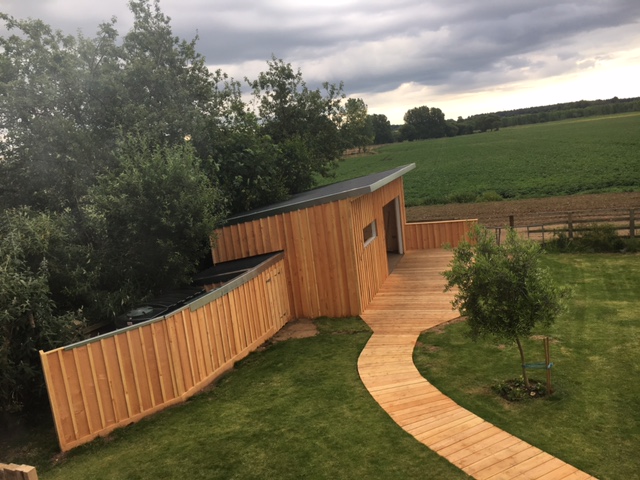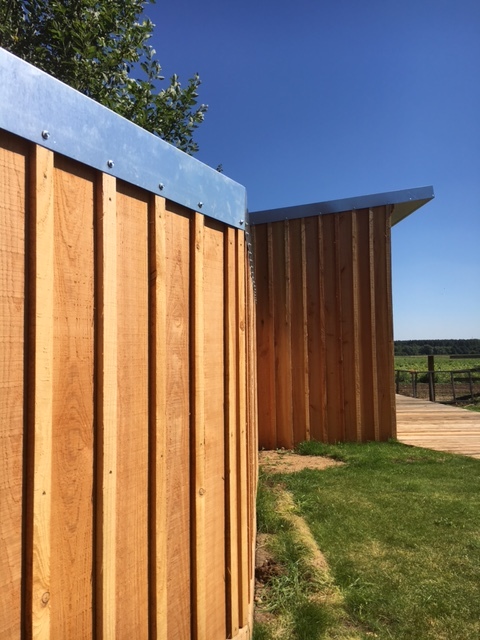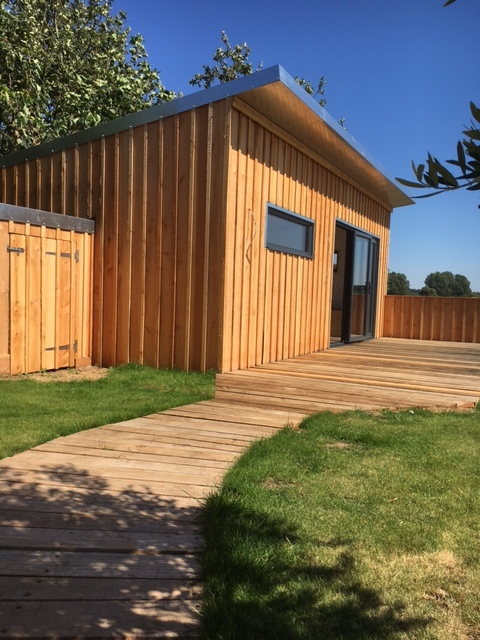At Dodd & Co we use a lot of Douglas fir for our structural work. The pictures within this article are all of a studio project we recently completed which had Douglas Fir cladding inside and out. One of the reasons the client chose Douglas Fir was because of it’s ‘silvering’ properties. Again, the pictures, which are taken over a period of a few weeks demonstrate the speed at which Douglas Fir will lose its reddishness and take on a silvery-grey appearance.
Douglas Fir was first introduced to the UK in 1827 by the Scottish botanist David Douglas. It thrives in western areas of the UK where rainfall is higher than the rest of the UK. Since its introduction, it has become a staple of the construction industry. It is a commercially important source of wood and is used to make beams, veneers, furniture, cladding, decking and flooring.
Why do we use Douglas fir?
Douglas Fir is the strongest of our homegrown softwoods. It can cope with heavy duty framing, groundworks, cladding and landscaping. Like Oak, there’s not a lot it can’t be used for externally, it is naturally durable and will fare better than another soft wood in the ground. Due to it’s density and resin content it can be difficult to treat but we can advise on that.
Compared with European redwood, it is 60 per cent stiffer, 40 per cent harder and is more resistant to suddenly applied loads. It also has high levels of bend and compression along the grain.
As a sawn product it usually comes in planks of 300mm and six metres but bigger is always possible if required. The trees grow so straight that getting longer than six metres isn’t too much of a problem. Getting a different width is trickier but, again, nothing is impossible.
Of all the sawn soft woods, Douglas fir is relatively inexpensive making it a cost effective as well as attractive option.
Here are a few facts about the Douglas fir:
The Douglas fir is an evergreen conifer native to North America. It’s Latin name is Pseudotsuga menziesii and it comes from the Pinaceae family.
Douglas fir bark is non-flammable. This protects the tree from fires in its native range.
Douglas fir can grow to 55m and live for more than 1000 years. It can be found growing in a range of habitats, including open forests with plenty of moss and rainy conditions.
Spotting a Douglas fir:
Young Douglas fir has bark that is grey-green with highly scented blisters. Over time the bark becomes purple-brown, thick and corky with horizontal fissures. The leaves are needle-like, flat, soft and flexible, and distributed around the twig. They are green in colour with white-green stripes on the underside. Buds resemble those of beech trees - they are red-brown, scaly and slender, and taper to a point.
When mature, the trunk has resin-filled blisters while the scales on the cones have three pointed tips. A Douglas fir can be identified by the sweet resin smell that is released by crushed leaves.
Douglas fir is monoecious, meaning both male and female flowers are found on the same tree. The male flowers are oval clusters of yellow stamens growing on the underside of the previous year's shoots, while female flowers are green to red upright tufts, and grow at the tips of twigs.
After pollination by wind, female flowers develop into oval cones, which hang straight down from the branches and change in colour from yellow to pink to light brown. From each scale protrudes a unique three-pointed bract.
Value to wildlife
Because the trees live to such a great age, they provide deadwood cavities, in which birds and bats can shelter. Being tall, they also make suitable nesting sites for larger birds of prey, such as buzzards, sparrowhawks and hobbies (a type of falcon).
The spruce carpet and dwarf pug moths feed on the leaves, while the seeds are eaten by finches and small mammals. In Scotland, Douglas fir forests provide habitats for the red squirrel and pine marten.
Anyone interested in any of our structures using Douglas fir, please contact us via email or telephone. Details on the home page of the website.







